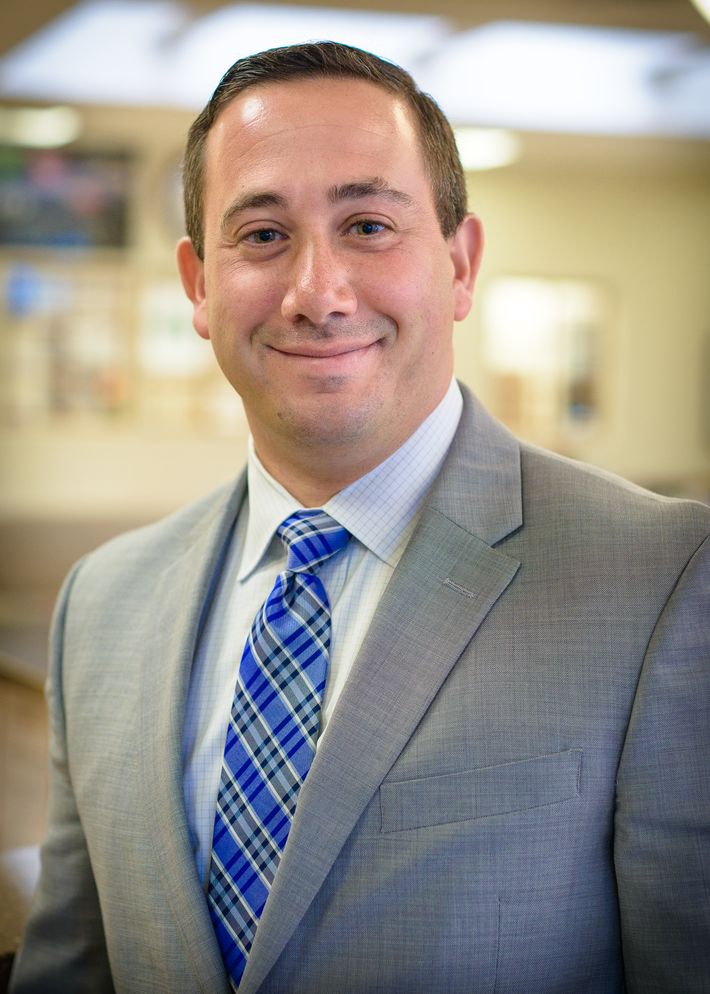When Eva Weinlander treats patients, there’s often a person in the room working as a scribe, typing away at the patient’s medical note while she focuses on providing care.
But lately, Weinlander, a family medicine doctor at Stanford Primary Care, has also been trying out an AI tool from Microsoft. It listens to the conversation and documents it almost instantaneously. The AI tool, while good at taking down the patient’s story in the moment, can’t yet perform some of the tasks human scribes are good at like looking up a patient’s medical history before they get there and including recent test results. Weinlander said she’s joked to the scribes in her clinic that they might soon be out of a job if AI learns to do those extra tasks.
That future might not be far off. The adoption of AI clinical documentation tools, often called AI scribes, across the healthcare industry is reshaping how doctors practice — and in some cases displacing the human medical scribes they historically relied on. As the technology underlying these tools rapidly advances, much of the low-level, clerical work that has fallen on healthcare workers’ shoulders could disappear.
 Pelu Tran
Pelu Tran“Most human scribing over the next three to five years can be replaced,” said Pelu Tran, CEO of AI startup Ferrum Health who previously co-founded Augmedix, a company that provides both human scribes and AI scribes to healthcare organizations.
AI scribe startups are among the hottest in health tech, with investors pouring over $300 million into Abridge, Ambience, Nabla and Suki this year alone. Their tools can be rolled out for a fraction of the cost of a human scribe, several hospital systems’ technology executives told Endpoints News.
Meanwhile, human scribe companies like ScribeAmerica which emerged decades ago are trying to compete with their own AI tools, as those startups and giants like Microsoft threaten to turn them into a relic of the past. It’s an uphill battle in a market that’s fast becoming commoditized.
Anastasia Esse, who works for ScribeAmerica as a chief scribe in Los Angeles, said her health system started piloting AI scribes a few months ago. The technology hasn’t figured out how to navigate the noise and chaos of the emergency department where she works, but she’s concerned AI will soon take over the jobs of her colleagues working in other specialties.
“I tell new scribes that come in if this is actually going to happen, you should start figuring out backup plans,” she said.
The critical role of note-taking in doctor’s appointments
The shift to electronic health records in the early 2000s meant that the notes providers had to compile grew lengthier. A July study found doctors spend six hours working in electronic health records for every eight hours caring for patients. Much of that time is spent on the medical note, a powerful document that’s essentially a summary of a patient’s visit — why they’re seeing the doctor, their symptoms, the assessment and the plan — and has implications on what happens next with a patient’s care, determines what the clinic bills insurance, and can be important for potential litigation.
Medical scribes surfaced as a tool to make that note easier to draft. They helped doctors focus on the patient while the scribe listened, either in person or virtually and documented the visit. Scribes tended to be pre-medical students or others aiming for a career in the healthcare field, and studies have shown their use can slash doctors’ computer time and make them happier and more productive.
One decade-old estimate pegged the number of US medical scribes at around 20,000 and projected that the workforce would hit 100,000 by 2020. Business was booming, growing at rates akin to internet startups, the founder of one scribe startup acquired by Microsoft once wrote. It’s not clear if those projections were realized.
As ambient AI documentation tools emerged with the advent of generative AI, health systems have started testing and comparing the tools, rolling out the winners to doctors across their organizations. It’s early, but hospital technology execs gush about the tools’ potential.
“The concept that a device will listen to a conversation that I’m having with the patient and I walk out and a very reasonable draft of the note, documentation, assessment and plan is ready within two minutes, is absolutely revolutionary,” said Tamara Moores Todd, interim chief health informatics officer at Intermountain Health. Intermountain is rolling out Microsoft’s AI scribe, DAX Copilot, to all employed physicians and advanced practice providers.
Tampa General Hospital has rolled out DAX Copilot to 300 clinicians and about 100 or so actively use it. It plans to provide the tool to about 450 clinicians in total. The health system is so confident that it canceled its contracts for human scribes, a strategy it’s used for much of the last decade.
“The generative AI scribe offering is incredibly competitive, as compared to human, virtual or in-person, scribes. It’s just that good,” said Nishit Patel, Tampa General’s chief medical informatics officer.
Competing with AI
Employing human scribes to take notes is expensive and prone to turnover. In-person medical scribes can cost $15 to $25 an hour. An AI tool, while still not cheap, might cost a couple of hundred dollars a month per doctor using it, according to several hospital IT executives.
 Stephen Bello
Stephen BelloAnd often scribes leave their positions not long after they’re trained and ready to go, sometimes within a year, said Stephen Bello, SVP who directs Northwell Health’s Eastern region. The New York health system historically worked with human scribes from ScribeAmerica, the biggest company in the space with some 26,000 scribes, in some of its busiest ambulatory practices and emergency rooms.
Companies including ScribeAmerica which started out supplying human scribes are trying to adapt to an AI-first world, launching AI tools that can be used on their own or in conjunction with a remote scribe who can tailor the note to the doctor’s preferences. They’re pitching that their years of supplying human scribes make them better equipped to handle the different ways notes can be structured.
Kevin Brady, president of Ohio-based Physicians Angels, which employs 750 remote scribes in India, said he offers an AI tool, but most of its customers don’t seem to want it. And while three of the company’s large clients considered adopting other AI scribe tools, two of them chose to stick with live scribes. The other went with a combination of live scribes and AI to save money.
 Kevin Brady
Kevin BradyBrady said he isn’t threatened by the proliferation of AI tools in the market, arguing they’re not as good as advertised and their notes still require a good bit of editing. In fact, his company’s remote scribes assist some AI scribe companies in cleaning up medical notes and charts before they get to the doctor, he said. Brady declined to disclose the companies.
Even so, AI tools continue to get better and require less editing. Some health system execs said the different ones they’ve tested produce medical notes that are generally indistinguishable from each other.
It’s possible health systems will need to rely on humans less over time. Remote scribe company Augmedix, which was acquired by General Catalyst-backed Commure in October, rolled out AI scribe and hybrid tools this year. At an investment bank’s conference in May, Augmedix CEO Manny Krakaris said the company’s remote human scribes still accounted for 90% of the company’s revenue as of the end of 2023, but he expected that original product, “with the advent of AI, would be sunset at some point or at least wouldn’t grow at the historical clip of 45% to 50%.”
Northwell is now trialing three AI scribes. Bello said he expects to choose one or two vendors to roll out widely and will likely move away from in-person scribes.
“People coming in and out, and new faces in practice trying to learn the flow, that can be pretty disruptive,” Bello said. “From an efficiency standpoint, a practice optimization standpoint, the AI models are a more sustainable model for us.”
(This story is from our Health Tech newsletter. If you’d like to sign up, just click here.)